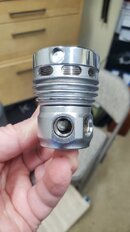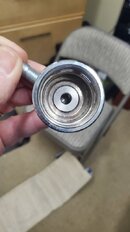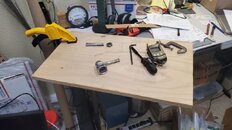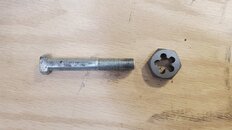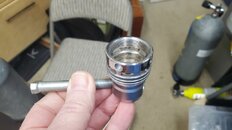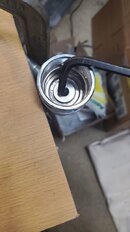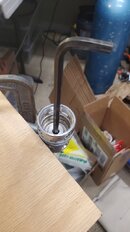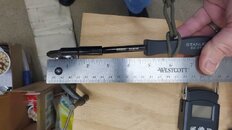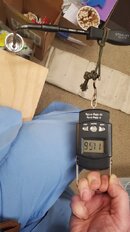As so many threads have demonstrated, there is no small interest in Do It Yourself regulator service.
My position has consistently been, "It ain't rocket science, but it is precise." Dive Shops (despite your $200 repair bill) are not paid what they deserve for properly performed reg service, and errors do occur, because they can't stay in business by comprehensively servicing your gear for $30/stage.
At seminar after seminar conducted at DEMA (the Dive Equipment Manufacturer's Association convention), one third to one half of participants (no matter which manfacturer) raise their hand to indicate that "No. They've never opened up a regulator before this seminar." After which, in 2-6 hours, they graduate certified to service your gear. I don't find this reassuring.
Unfortunately, the same errors exist in the DIY community. It ain't rocket science, but "one doesn't know what one doesn't know." As I expanded my training by buying and servicing the cheapest eBay "deals" for practice, the spectrum of gear which was sold "ready to dive" with profound problems was truly horrifying.
Hence, this course. While in person, hands-on training would potentially be better, both COVID and cost make that prohibitive for me to offer. Travel, lodging, freight cost and potential loss of regs and tools all add up.
But if you are willing to, in advance,
- arrange for a computer with a camera and learn how to Zoom
- buy some basic tools (I'm working with Bruce at ScubaTools.com right now for starter and advanced kits)
- get an eBay regulator set (or your own) to potentially make a critical mistake on when servicing
- perhaps get a service kit, and
- set aside a lonnnng weekend
then we can learn how to service regs together via Zoom, with a bit of two-way video and conversation, lots of Q&A, and plenty of examples of problem solving.
Our tentative first date is May 22-23, 2021, starting at 7:00am on the West Coast and 10:00am on the East Coast (also "very late" to "very early" in Europe, and perhaps the opposite for the Pacific Basin). The good news for the West Coast folks is that we'll be done with the first day at 4:30pm (instead of 7:30pm for the East Coast). We'll have breaks and lunch time off during both days.
See the next few posts for the current tentative outline, and how to get signed up.
Read my ScubaBoard profile if you want to know a bit more about me.
My position has consistently been, "It ain't rocket science, but it is precise." Dive Shops (despite your $200 repair bill) are not paid what they deserve for properly performed reg service, and errors do occur, because they can't stay in business by comprehensively servicing your gear for $30/stage.
At seminar after seminar conducted at DEMA (the Dive Equipment Manufacturer's Association convention), one third to one half of participants (no matter which manfacturer) raise their hand to indicate that "No. They've never opened up a regulator before this seminar." After which, in 2-6 hours, they graduate certified to service your gear. I don't find this reassuring.
Unfortunately, the same errors exist in the DIY community. It ain't rocket science, but "one doesn't know what one doesn't know." As I expanded my training by buying and servicing the cheapest eBay "deals" for practice, the spectrum of gear which was sold "ready to dive" with profound problems was truly horrifying.
Hence, this course. While in person, hands-on training would potentially be better, both COVID and cost make that prohibitive for me to offer. Travel, lodging, freight cost and potential loss of regs and tools all add up.
But if you are willing to, in advance,
- arrange for a computer with a camera and learn how to Zoom
- buy some basic tools (I'm working with Bruce at ScubaTools.com right now for starter and advanced kits)
- get an eBay regulator set (or your own) to potentially make a critical mistake on when servicing
- perhaps get a service kit, and
- set aside a lonnnng weekend
then we can learn how to service regs together via Zoom, with a bit of two-way video and conversation, lots of Q&A, and plenty of examples of problem solving.
Our tentative first date is May 22-23, 2021, starting at 7:00am on the West Coast and 10:00am on the East Coast (also "very late" to "very early" in Europe, and perhaps the opposite for the Pacific Basin). The good news for the West Coast folks is that we'll be done with the first day at 4:30pm (instead of 7:30pm for the East Coast). We'll have breaks and lunch time off during both days.
See the next few posts for the current tentative outline, and how to get signed up.
Read my ScubaBoard profile if you want to know a bit more about me.



